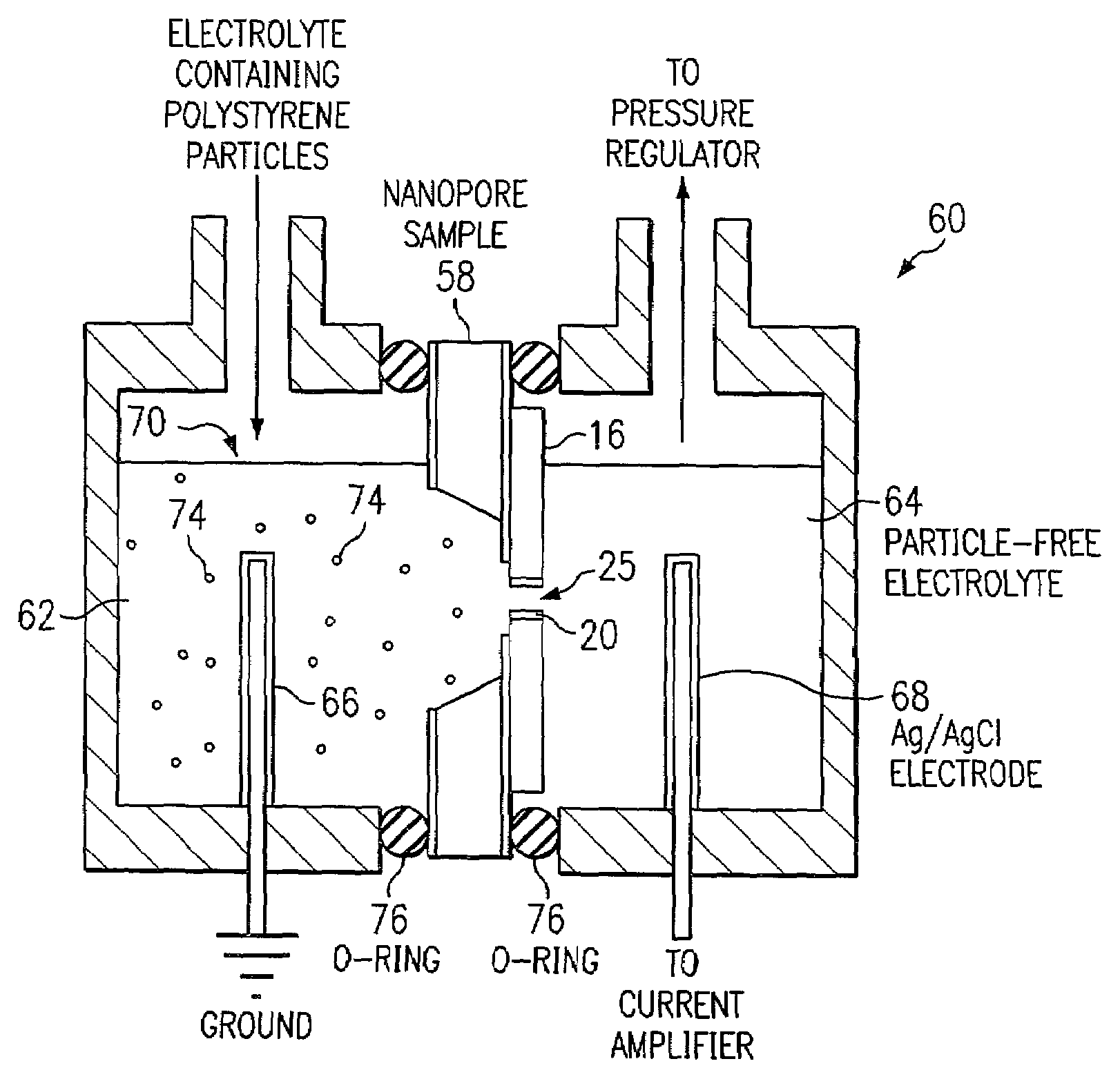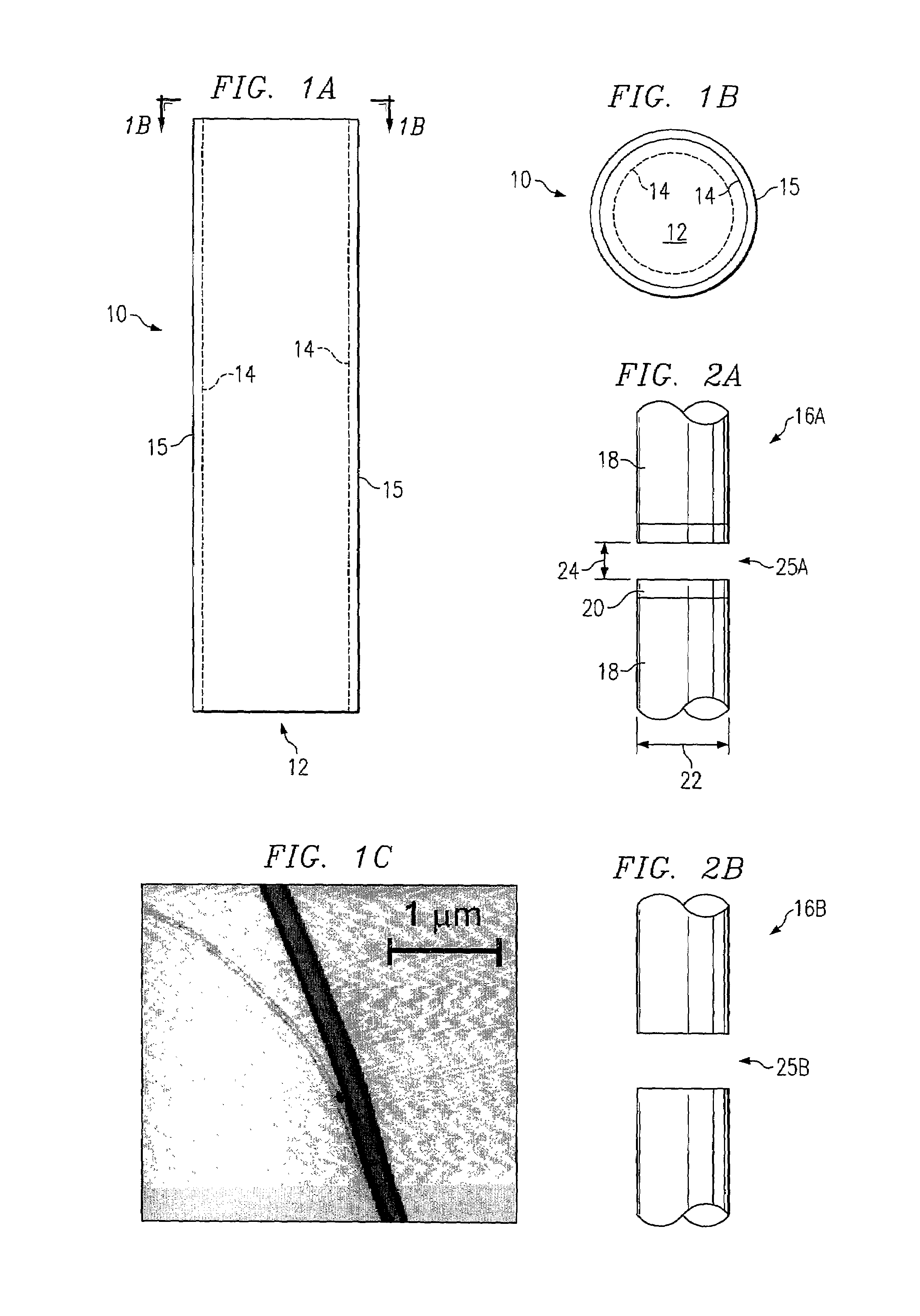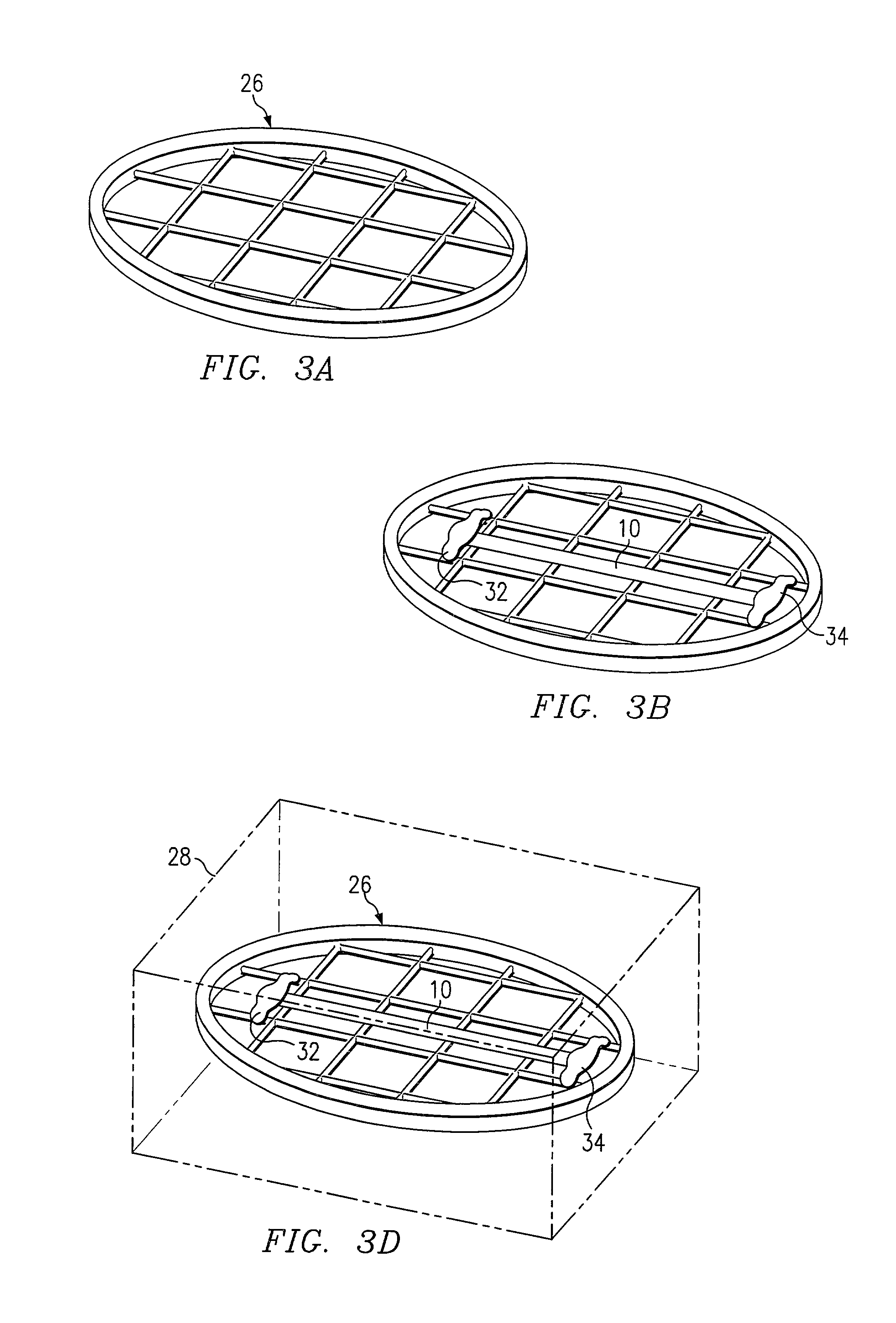Method and apparatus for nanoparticle transport and detection
a technology of nanoparticles and nanoparticles, applied in the field of nanoparticles, can solve the problems of difficult to implement quantitative data analysis for such models, and difficult to ensure structural uniformity, etc., to achieve tight control over fabrication conditions, improve the detection accuracy of particle particles, and improve the effect of structure uniformity
- Summary
- Abstract
- Description
- Claims
- Application Information
AI Technical Summary
Benefits of technology
Problems solved by technology
Method used
Image
Examples
Embodiment Construction
[0026]Example embodiments of the invention are best understood by referring to FIGS. 1A through 6 of the drawings in which like numerals refer to like parts.
[0027]FIG. 1A is a schematic diagram of a nanotube 10, and FIG. 1B is plan view of nanotube 10 along the lines 1-B of FIG. 1A. As illustrated in FIG. 1A, nanotube 10 is formed with a core section, or pore 12, surrounded by one or more walls 14. In some nanotubes, surrounding the one or more walls 14 is a coating 15. In one embodiment, coating 15 is an amorphous carbon layer; however, if a coating is utilized, any coating that facilitates the manipulation of the nanotube in the subsequent steps as illustrated in FIG. 3, may be used. For example, the coating may improve the visibility of the nanotube under an optical microscope, or improve the mechanical strength of the nanotube so that it will not break easily under mechanical stress that may result from handling or manipulation of the nanotube as illustrated in FIG. 3. The inter...
PUM
| Property | Measurement | Unit |
|---|---|---|
| pressure | aaaaa | aaaaa |
| size | aaaaa | aaaaa |
| pore diameter | aaaaa | aaaaa |
Abstract
Description
Claims
Application Information
 Login to View More
Login to View More - R&D
- Intellectual Property
- Life Sciences
- Materials
- Tech Scout
- Unparalleled Data Quality
- Higher Quality Content
- 60% Fewer Hallucinations
Browse by: Latest US Patents, China's latest patents, Technical Efficacy Thesaurus, Application Domain, Technology Topic, Popular Technical Reports.
© 2025 PatSnap. All rights reserved.Legal|Privacy policy|Modern Slavery Act Transparency Statement|Sitemap|About US| Contact US: help@patsnap.com



